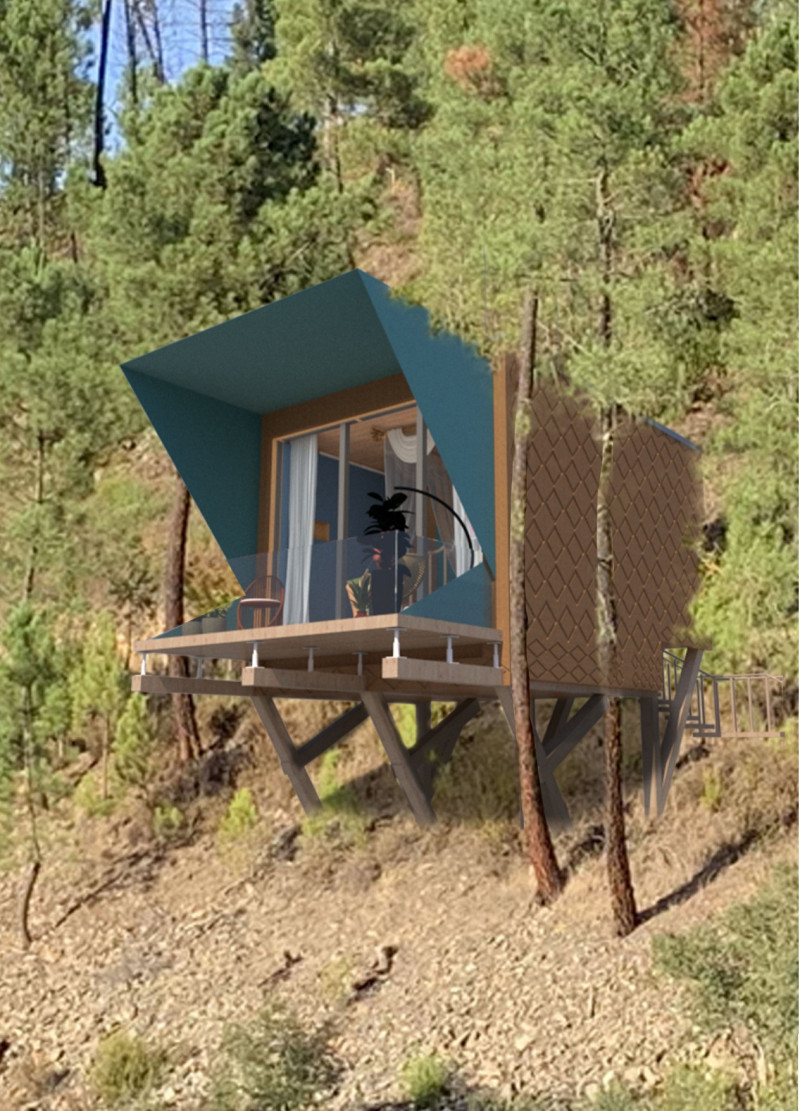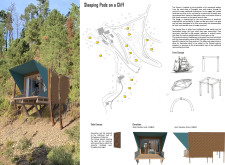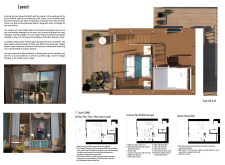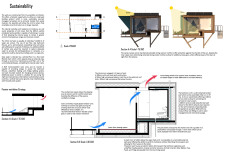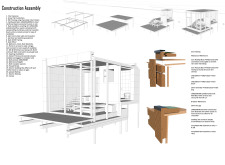5 key facts about this project
The design draws inspiration from Portugal’s rich naval heritage and traditional architecture, situated in a landscape that highlights a connection to nature. It emphasizes principles of simplicity, sustainability, and reusability. The building is a multi-functional space that minimizes environmental impact. The overall concept allows for hand construction and deconstruction, prioritizing recycling and efficient resource use.
Design Influence
The shape of the building is reminiscent of traditional sailing vessels, blending cultural references with modern practicality. This maritime influence has resulted in an effective form that uses fewer materials while still supporting prefabrication and hand-built methods. By adapting historical designs, the building maintains an appearance that complements its surroundings and honors the craftsmanship associated with shipbuilding.
Material Selection
Cork is a key material for both the walls and exterior cladding. It is sourced locally, reflecting the craftsmanship of the region while delivering good insulation and thermal performance. Its lightweight characteristics improve the overall building experience. This choice supports sustainability goals by reducing waste and promoting local economic activity.
Interior Layout
The design makes the most of natural light and ventilation through large windows on the east and west side. This feature strengthens the bond between people inside and the landscape outside. The interior is organized to be comfortable and accessible. A sunken wet room provides necessary amenities while allowing views of nature. The vaulted ceiling supports airflow and keeps the space comfortable throughout the year. The arrangement encourages a natural flow across different parts of the living area.
Construction Techniques
Construction methods include using screw piles for a strong foundation, Glulam beams for a stable structure, and prefabricated floor panels for efficiency. This approach ensures the building is durable and meets environmental standards. The roof is designed to manage rainwater while accommodating solar panels that generate energy for essential components, reflecting a focus on self-sufficiency.
The design culminates with large windows that frame views of the surrounding environment. It emphasizes a strong relationship between indoor and outdoor spaces, enriching the experience of living in harmony with nature.


